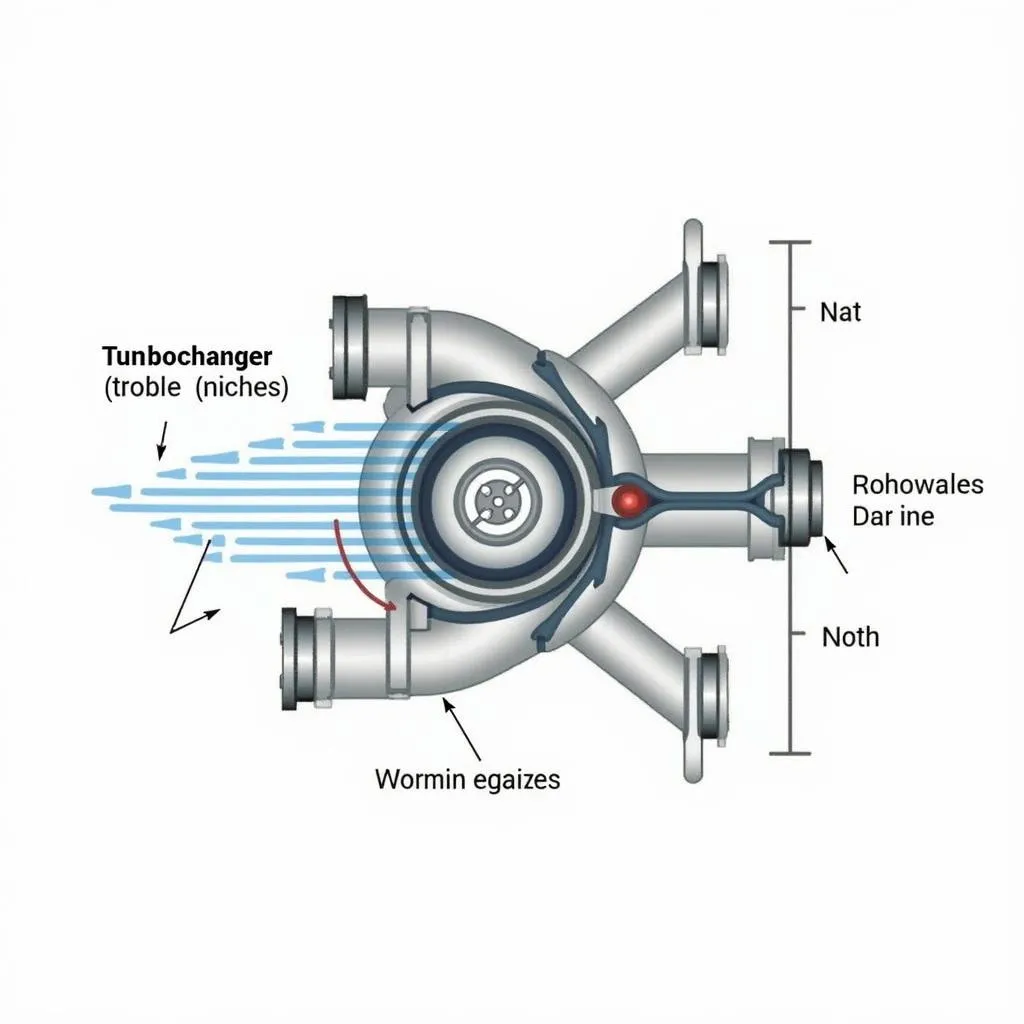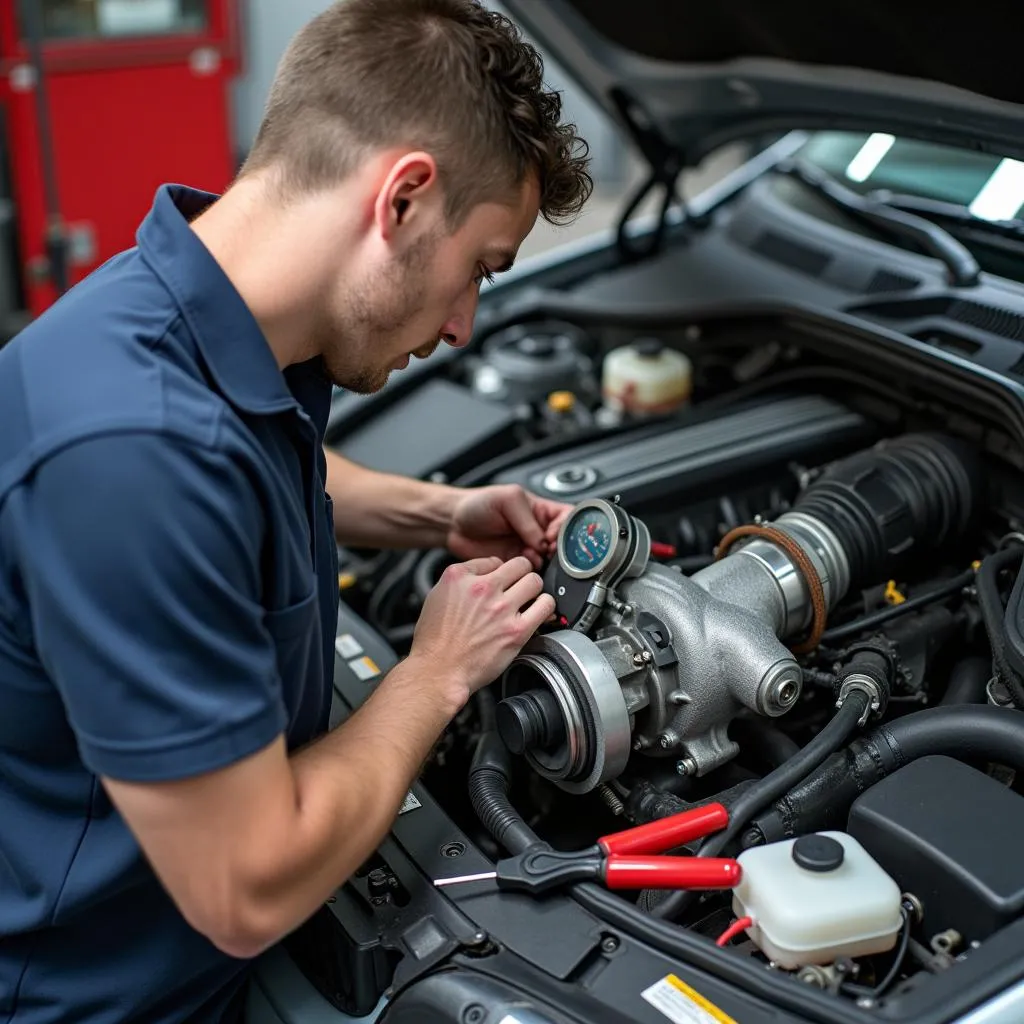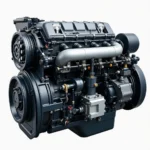The BMW 320d E46 is renowned for its sporty nature and efficient diesel engine. A key component providing that extra boost is the turbocharger. This article covers everything you need to know about the 320d E46 turbocharger, including how it works, common issues, solutions, and tips.
What is a Turbocharger and How Does It Work?
Imagine being able to inject more air into your engine on demand – that’s precisely what a turbocharger accomplishes. It harnesses the energy from the engine’s exhaust gases to spin a turbine, which in turn drives a compressor. This compressor forces extra air into the combustion chambers, enabling more fuel to burn and boosting power. For the 320d E46, this translates to more horsepower and torque, noticeably improving acceleration and overtaking performance.
 Diagram of BMW 320d E46 turbocharger operation
Diagram of BMW 320d E46 turbocharger operation
Common Problems with the Turbocharger on the 320d E46
Like any mechanical component, the turbocharger can wear out or get damaged over time. Typical signs of a defect are:
- Loss of performance:
The engine feels sluggish and lacks its usual power. - Unusual Noises:
Whistling, howling, or rattling sounds coming from the engine bay could signal turbocharger damage. - Blue or Black Smoke:
Leaking oil burning in the exhaust stream results in bluish smoke. Black smoke suggests incomplete combustion, which a failing turbocharger can also cause.
Causes of Turbocharger Problems
Often, several factors can lead to a turbocharger defect. These include:
- Lack of Lubrication:
The turbocharger needs adequate oil supply to operate smoothly. - Contaminated Oil:
Impurities in the oil system can cause turbocharger damage. - Foreign Objects:
Small particles entering the turbocharger can lead to damage. - Engine Overspeeding:
Frequently revving the engine into the red zone can overload the turbocharger.
Diagnosis and Repair of Turbocharger Problems
If you suspect a turbocharger issue with your 320d E46, it’s best to visit a workshop. They can read the fault codes and inspect the turbocharger for damage. Often, a repair is possible, but in some cases, the turbocharger must be completely replaced.
 Mechanic working on a BMW 320d E46 turbocharger
Mechanic working on a BMW 320d E46 turbocharger
Tips to Avoid Turbocharger Problems
With these tips, you can extend the lifespan of your turbocharger:
- Regular Oil Changes:
Strictly follow the manufacturer’s recommended intervals for oil changes. - Use High-Quality Oil:
Always use engine oil that meets your specific BMW’s specifications. - Proper Warm-up and Cool-down:
Allow the engine a few moments to warm up after starting. Similarly, drive at low RPMs for a couple of minutes before shutting it off to let the turbocharger gently reach operating temperature or cool down.
Performance Increase Through Tuning Turbochargers
Looking to boost your 320d E46’s performance even further? Installing a tuning or upgraded turbocharger is an option. These are designed to handle higher exhaust temperatures and speeds, allowing for greater power output.
Conclusion
The turbocharger is a crucial and intricate component of the BMW 320d E46. With proper care and maintenance, you can extend its lifespan and prevent expensive repairs. If you have questions or issues regarding your turbocharger, our experts are ready to help. Simply contact us through our website – we look forward to assisting you!

